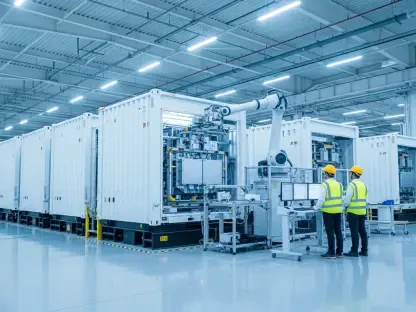The fate of California’s energy reliability often hangs in the balance as wildfires rage across the state’s vast landscapes. With over 360,000 customers losing power during electric utility shutoffs aimed at preventing fire outbreaks, a dire scenario unfolds. As flames creep dangerously close, a pressing question arises: Could microgrids offer the key to safeguarding power stability in these perilous conditions?
Unveiling The Crucial Role of Microgrids
Microgrids are emerging as a potential frontline solution to bolster energy reliability in wildfire-prone regions. These decentralized energy systems operate independently from the main power grid, offering localized sources through renewable energy options like solar and battery storage. Their operational efficacy becomes crucial during Public Safety Power Shutoffs (PSPS), which are preventive measures taken during extreme weather to reduce fire risks. After the devastating 2018 Camp Fire, where eighty-five lives were lost, microgrids gained attention as communities sought innovations to avoid such catastrophes.
Pioneering Microgrid Projects
Communities across California are turning to microgrids to escape the consequences of power outages. In Ojai Unified School District, solar panels and battery systems efficiently provide backup power, transforming a school facility into a vital evacuation and shelter center during crises. Such projects often benefit from specialized technology and support from companies like Schneider Electric. Schneider, through partnerships, adapts microgrid solutions to meet specific needs for high energy demands and zero-carbon goals.
Expert Opinions and Legislative Dynamics
Industry professionals highlight the critical nature of microgrids during emergencies. Marc Starkey from Schneider Electric underscores their role in maintaining power to essential infrastructure during severe weather conditions and PSPS events. Despite their potential, federal backing for clean energy initiatives faces hurdles. Legislative decisions threaten tax credits vital for funding these projects, creating urgency for project developers to meet pressing timelines for federal benefits.
Financing and Economic Considerations
Given the uncertain future of federal incentives, viable financial strategies remain crucial for microgrid adoption. Municipalities utilize various funding options, including state grants and utility rebates, to offset costs. Ongoing savings from solar and battery usage stimulate financial resilience, offering communities practical avenues to manage expenses. Energy Savings Performance Contracts (ESPCs) and Energy-as-a-Service (EaaS) agreements provide structured paths, balancing ownership responsibilities and turnkey solutions for those preferring streamlined arrangements.
Securing Community Welfare and Continuity
Beyond financial motives, microgrids ensure that essential services remain uninterrupted during emergencies. Schools and public facilities depend on continuous power to function as cooling centers, safeguarding vulnerable populations during extreme heat. With their ability to seamlessly integrate solar power and battery systems, microgrids serve as vital assets for communities aiming to maintain and secure critical operations. Despite occasional reliance on diesel generators for added resilience, thoughtful planning ensures efficient and cost-effective implementations, avoiding excessive expenditures on unnecessary resources.
In retrospect, the growing inclination toward microgrid adoption reflects both urgency and opportunity amid California’s wildfire challenges. The technological, financial, and community implications of implementing these innovative solutions offer myriad avenues for enhancing resilience and preparedness. As this energy transition unfolds, stakeholders can continue to drive progress, fortifying essential infrastructure against future threats and setting precedence in sustainable energy practices.









